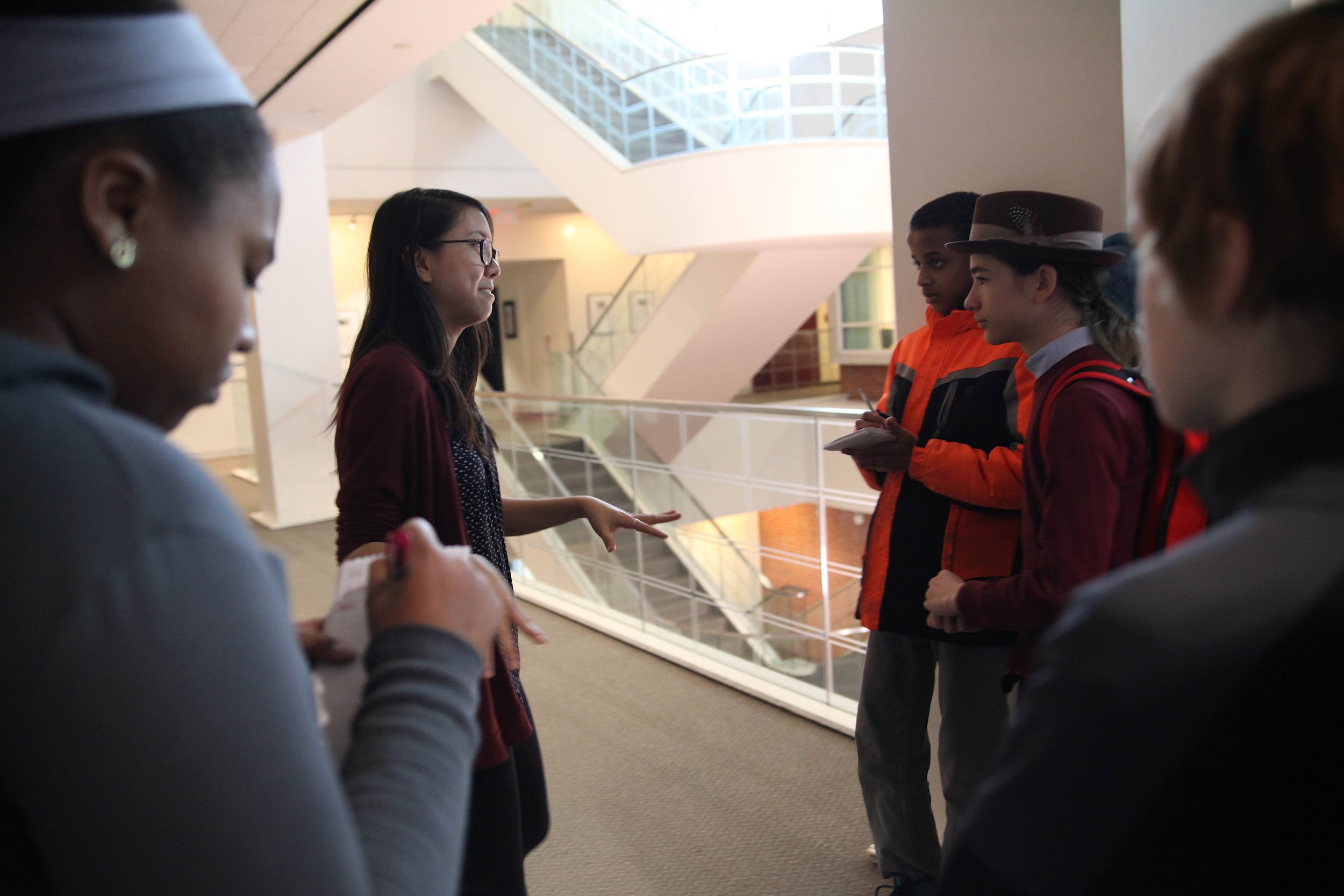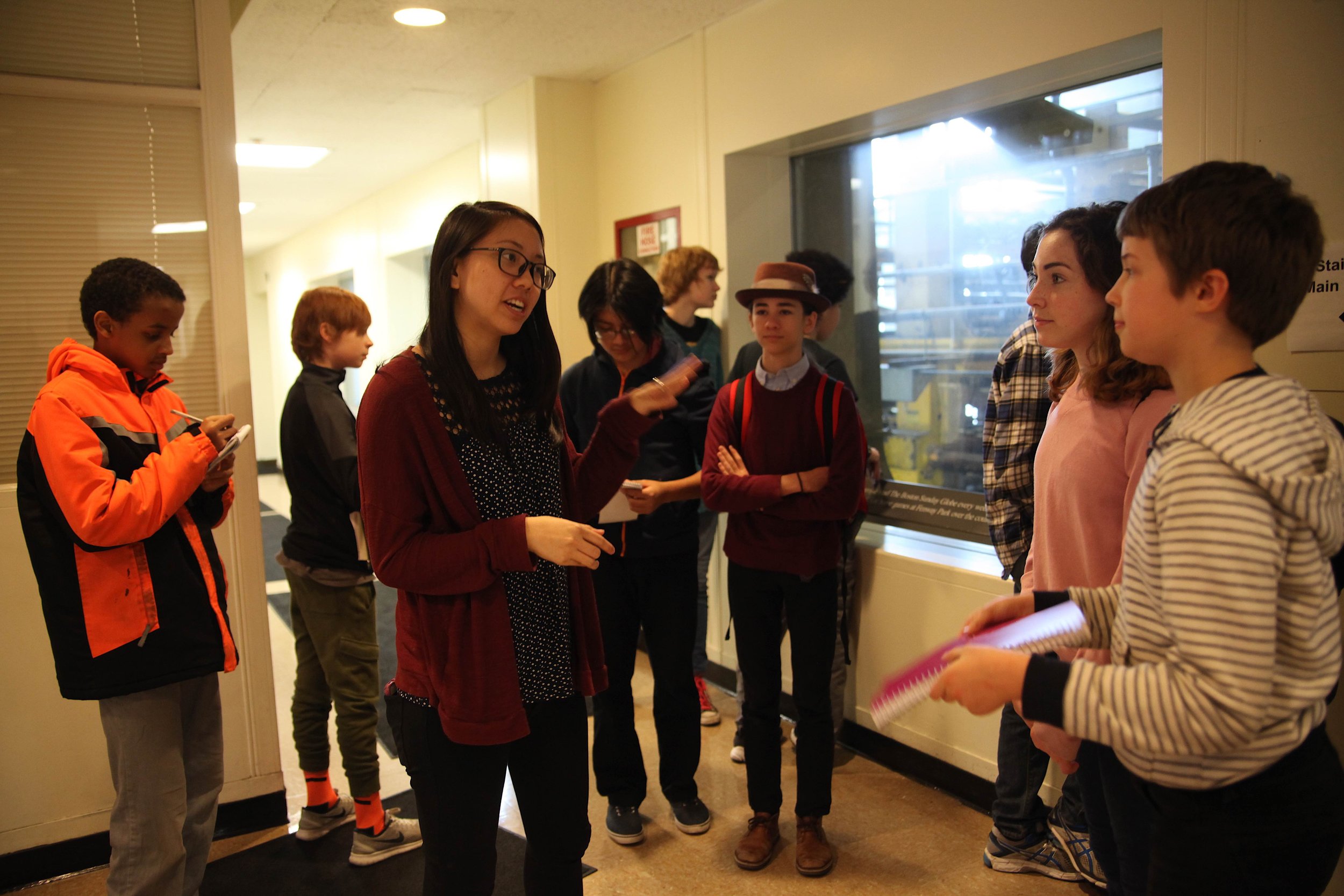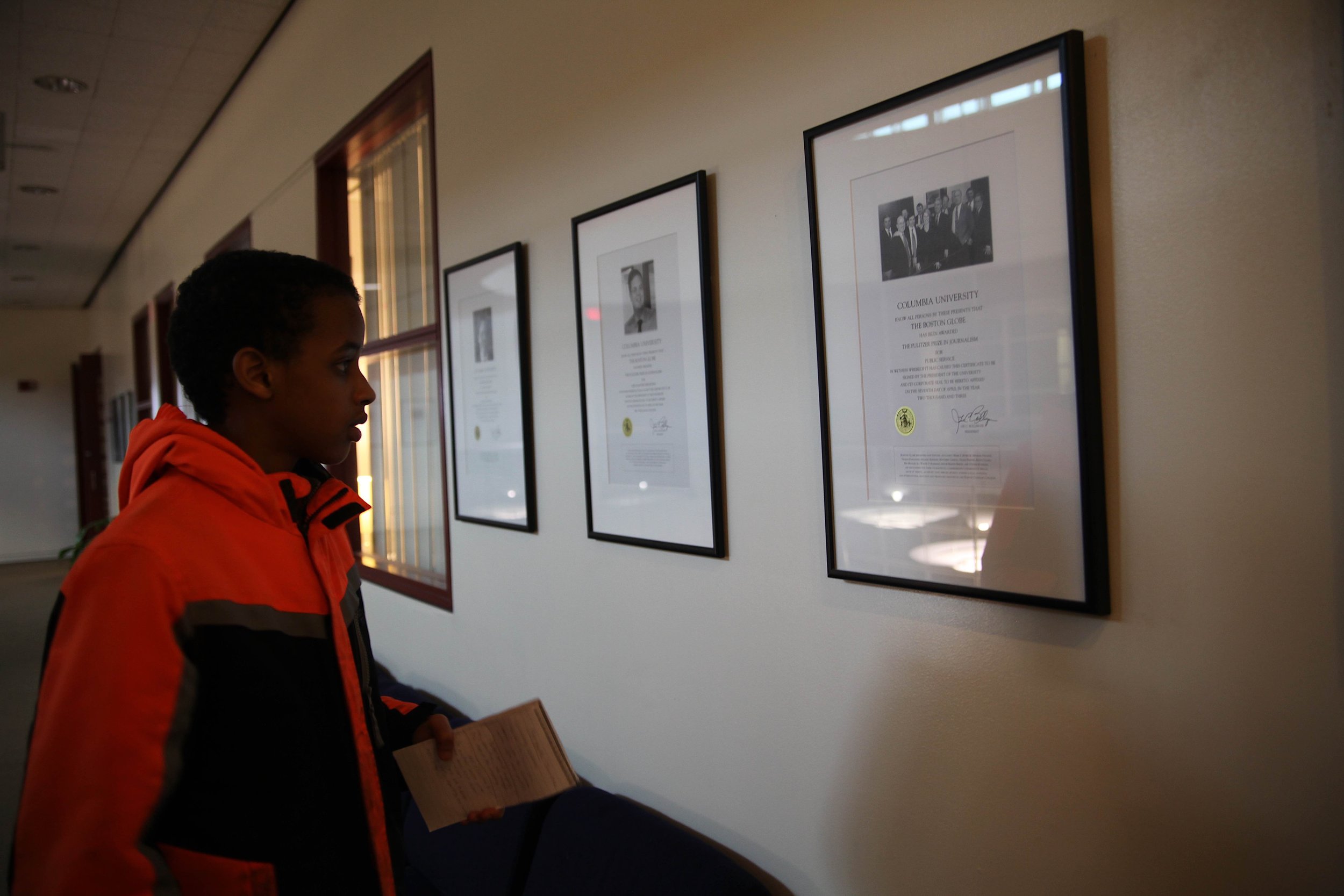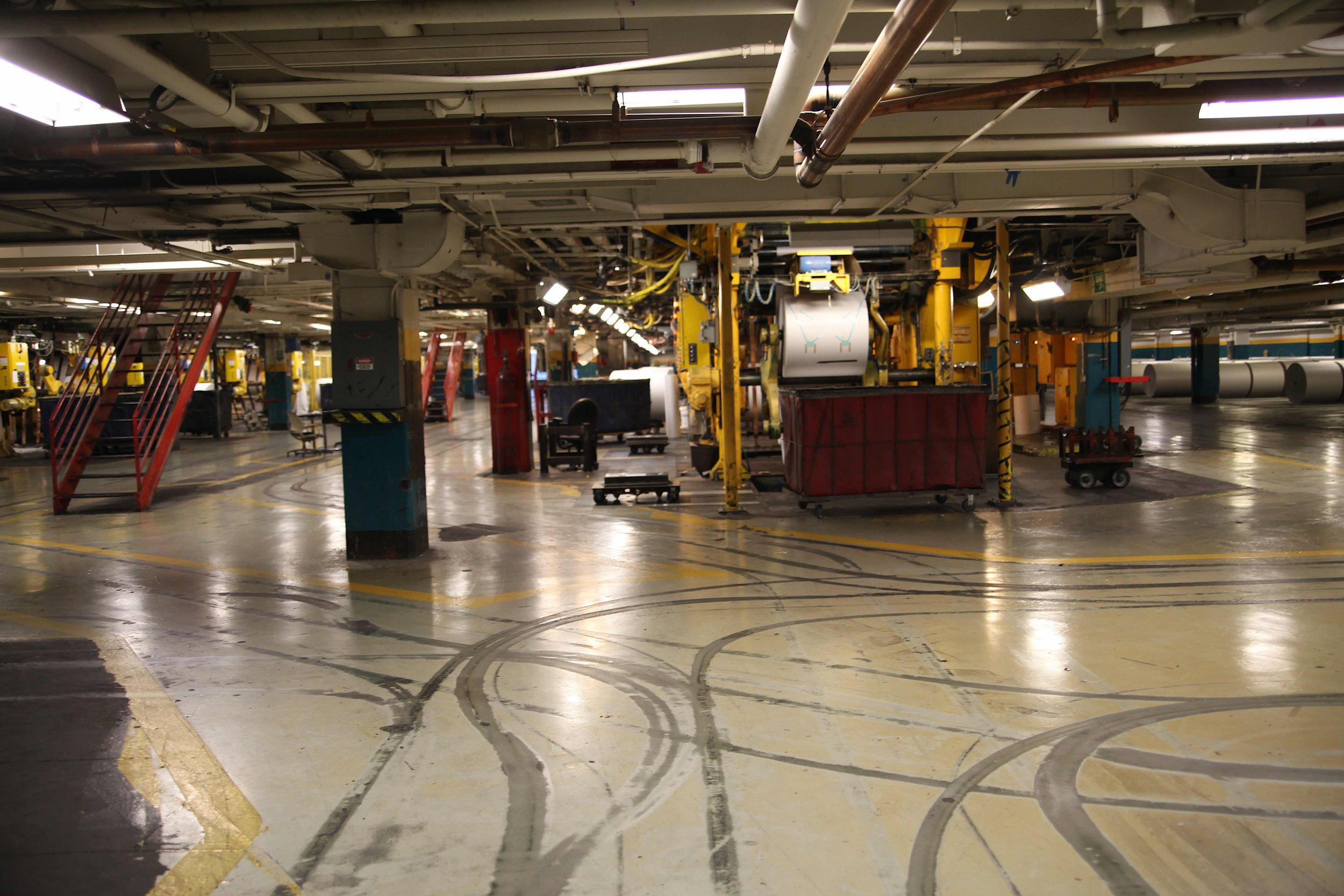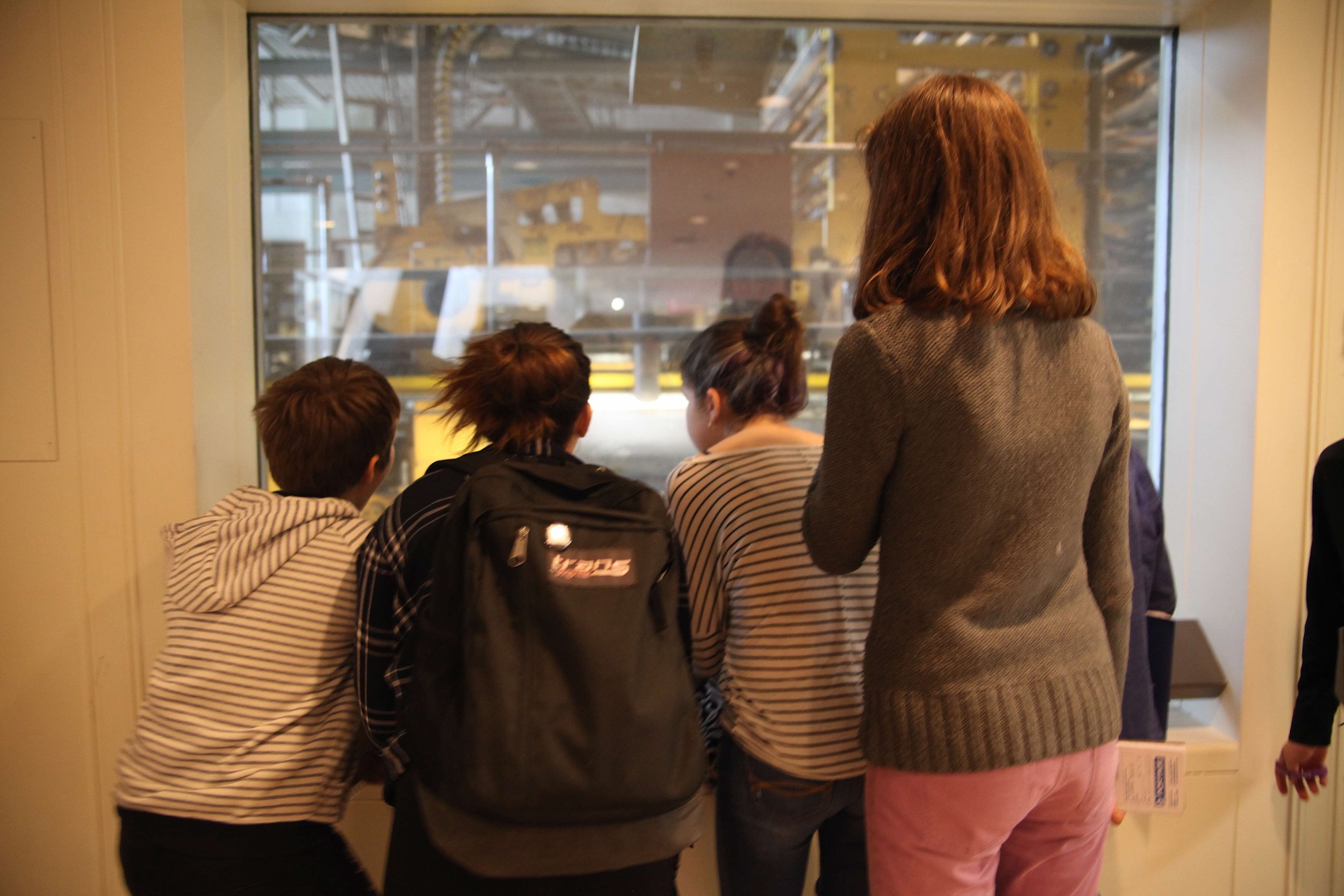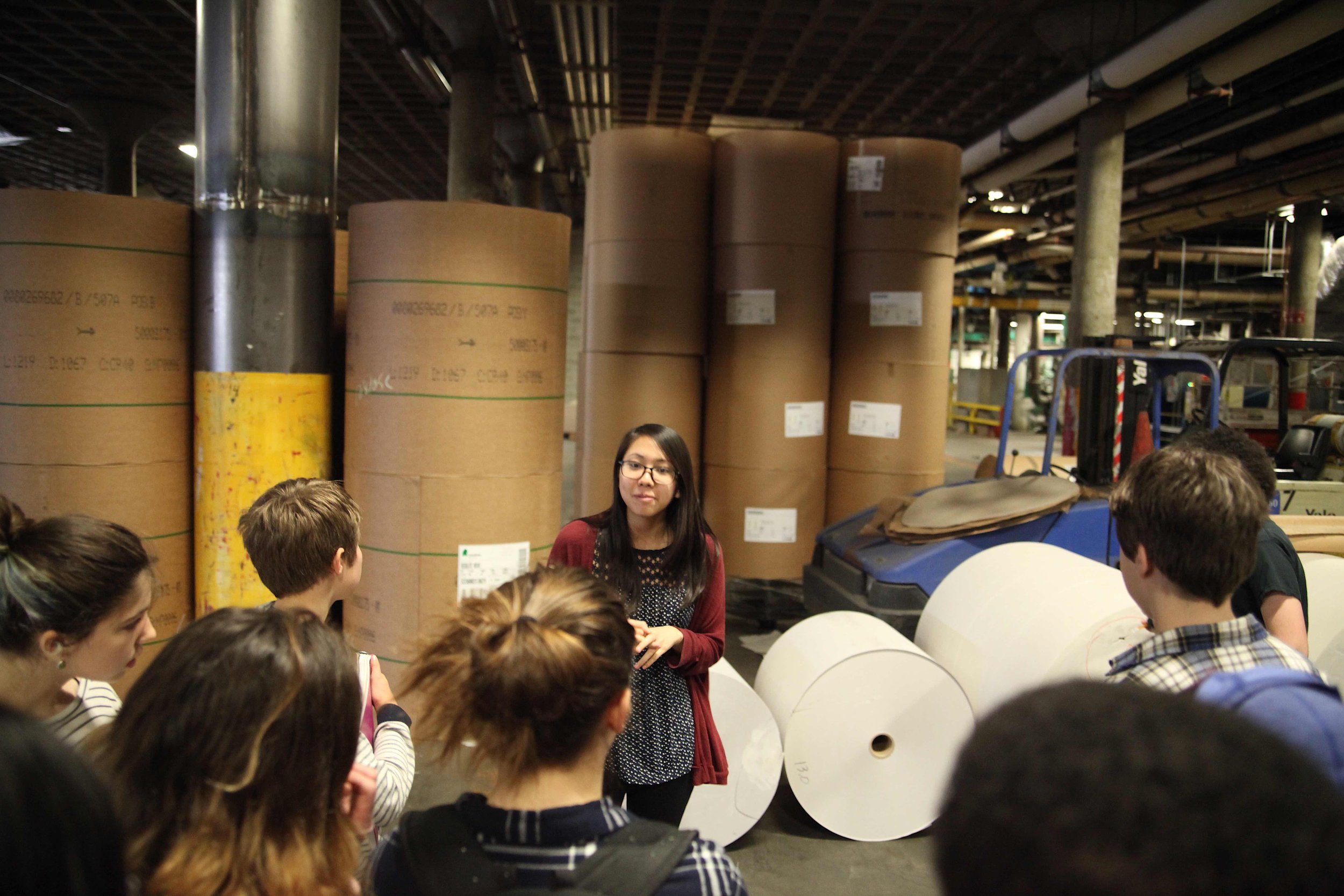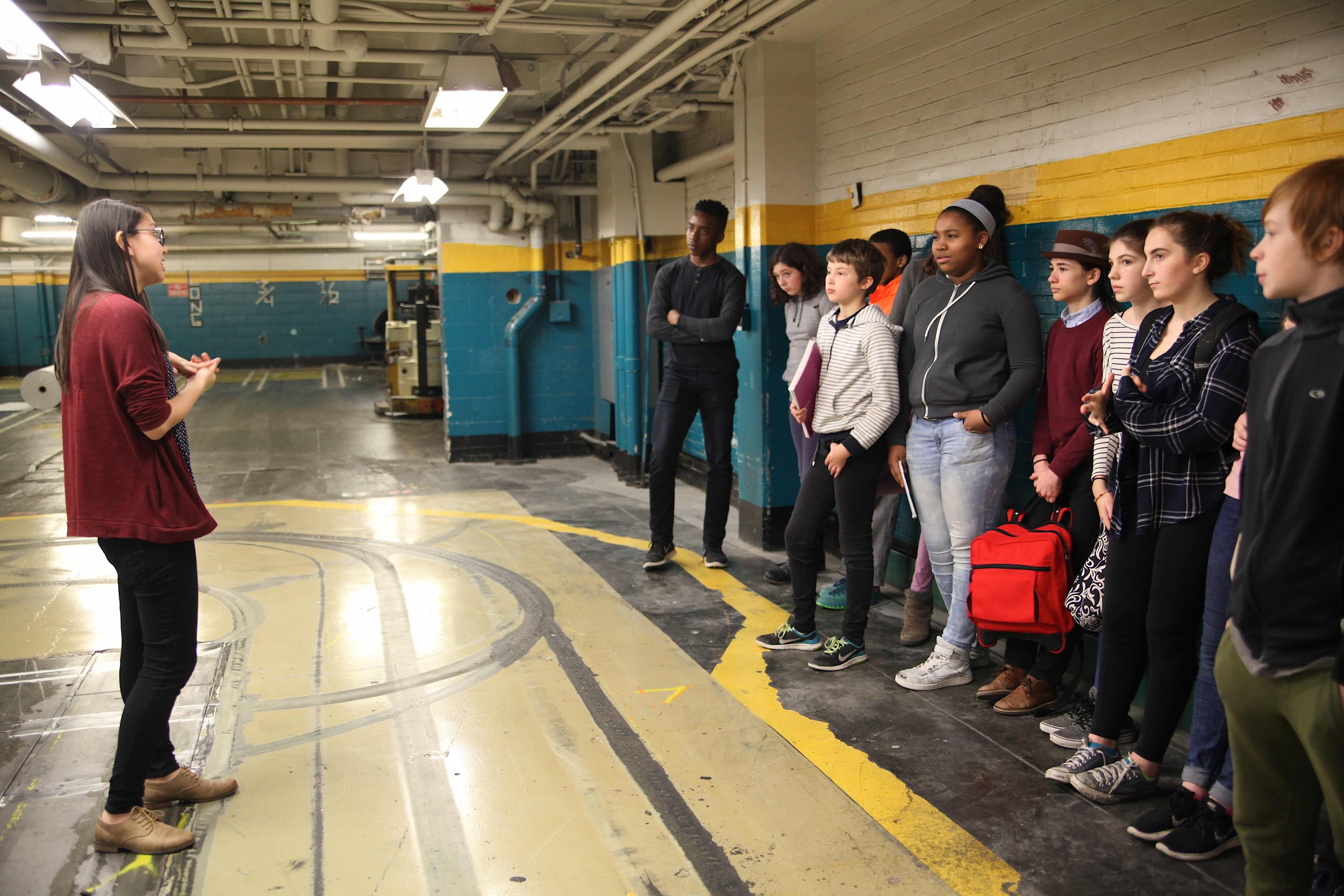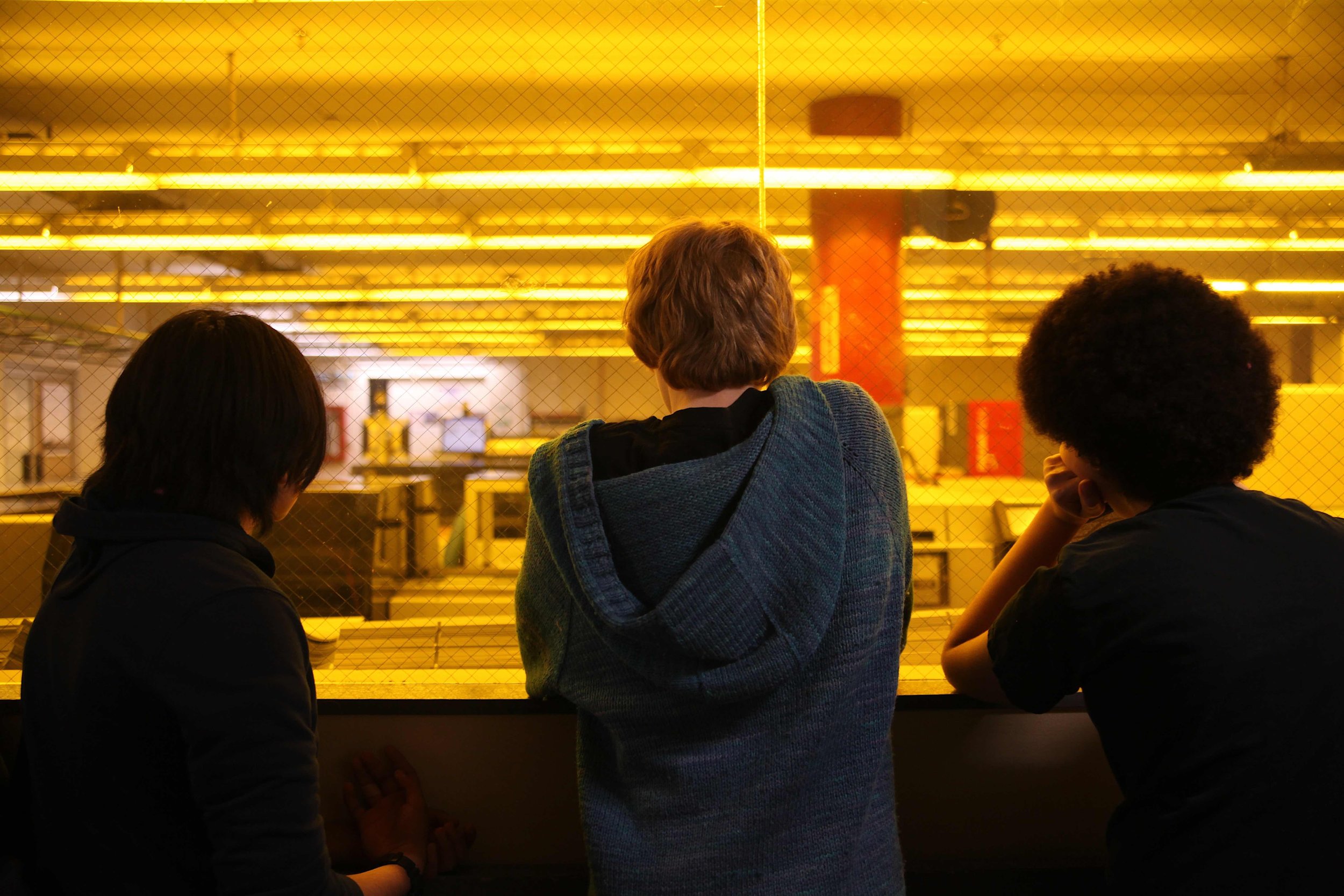Division 1 trip to the Boston Globe: A Unique Perspective into the Lives of Journalists
By Division I Media & Journalism reporter Ibrahim
After studying journalism since the beginning of the school year, Division 1 took a trip to the biggest newspaper in the state of Massachusetts. Our chaperones were Catherine, Kenny, and Hilary. We left the school at 8:40am and walked to Stony Brook station. Then, we took two trains directly to The Boston Globe headquarters. The building looked huge from the outside. As we entered the building, I was immediately mesmerized by the marble structures and the newspapers that were hanging on the walls. They even had a copy of the Boston Globe’s first ever edition!
Soon after we arrived, we met our tour guide, Jasmine. She is a student at Northeastern studying journalism. After getting to know each other, we went to the main part of the Globe, the newsroom. There were computers, people, printers, and televisions everywhere. Everyone seemed to be writing, trying to meet a deadline. Then, Jasmine took us to the 10:00 am editorial meeting. The meeting took place in a small room with a U-shaped desk. There were chairs around the desk, and on the walls were shelves that had really old television sets on them. We all took seats around the desk and waited for the editors to arrive.
At about 10:00am, editors came pouring into the small office. They all sat around the table. There was a huge projector screen in the room. The meeting started when Chris Chinlund, the managing editor in charge of news, came into the room. First, Jason Tuohey, the Deputy Management Editor of Audience Management, showed BostonGlobe.com on the projector screen. He showed statistics like how many people were on the Globe site at that moment, which was about 8,000, and how long they stayed on each story.
Then, the editors spoke. At the The Boston Globe, there are different sections that reporters are assigned to, including the Metro section, Business, and Living Arts. Chris called on each editor in charge of each beat and they give a quick summary of the stories that their journalists were working on.
Stories included topics like the oldest Catholic church in the city and new evidence in the Aaron Hernandez trial. After the stories were presented, Chris and the other editors debated about what story to publish the next day. After the while, the group broke up and went their separate ways. The thing that really struck me about the meeting was how different it seemed that I had originally thought. I thought that the editorial meeting would be a place where loud arguments would take place and people would compete to get their story on the front page.
After the meeting, Chris stayed back to take our questions. Chris has been at the Globe for 35 years, so she had a lot of perspective to share. She was asked about what qualities (like timeliness, importance, interest, and uniqueness) she especially valued when picking front page stories. She replied, “I like stores that surprise me and tell me something about myself or the world that I didn’t know.” She answered other questions that we had like, “How do you fact-check a breaking news story when you need to get it out to the public?” (she said it’s very difficult to fact check a story on a breaking news deadline) and “Does The Boston Globe use social media to communicate stories?” (Yes, they do).
After 45 minutes talking with Chris, we all returned to the newsroom. Jasmine told us about the Spotlight team, an investigative group of journalists who several years ago uncovered a huge scandal at a the Catholic Church in the city. As we were talking, Jasmine led us into the other side of the Boston Globe, and we were standing in what seemed like a balcony. Below us was a huge blue rug that spanned the entire room. Hanging from the walls were Pulitzer Prizes that had been awarded to the Globe or its reporters. There were, in total, 26 Pulitzer Prizes! They ranged from investigative, to public service, to photography.
After that, Jasmine took us to go see the printing presses, which are located in the basement of the building. Since the Globe has to print a lot of newspapers, the printing press is huge and spans three levels. The papers come in blocks that weigh 1,800 pounds, which is almost one ton! The Boston Globe also prints some papers for The New York Times, The Boston Herald, and other newspapers. Sometimes these papers are small enough that they don’t have their own press, and sometimes they’re large, but want to use a press located closer to parts of their readership.
Throughout this trip, we learned a lot about The Boston Globe, how it works, and what it feels like to work for a major newspaper. When asked what impact this trip had on his understanding of journalism, 7th grader Rhys replied, “It was very eye opening, seeing journalists and editors working so hard and caring about what they put out into the world. This changed stereotypes that I had about being a journalist.”


